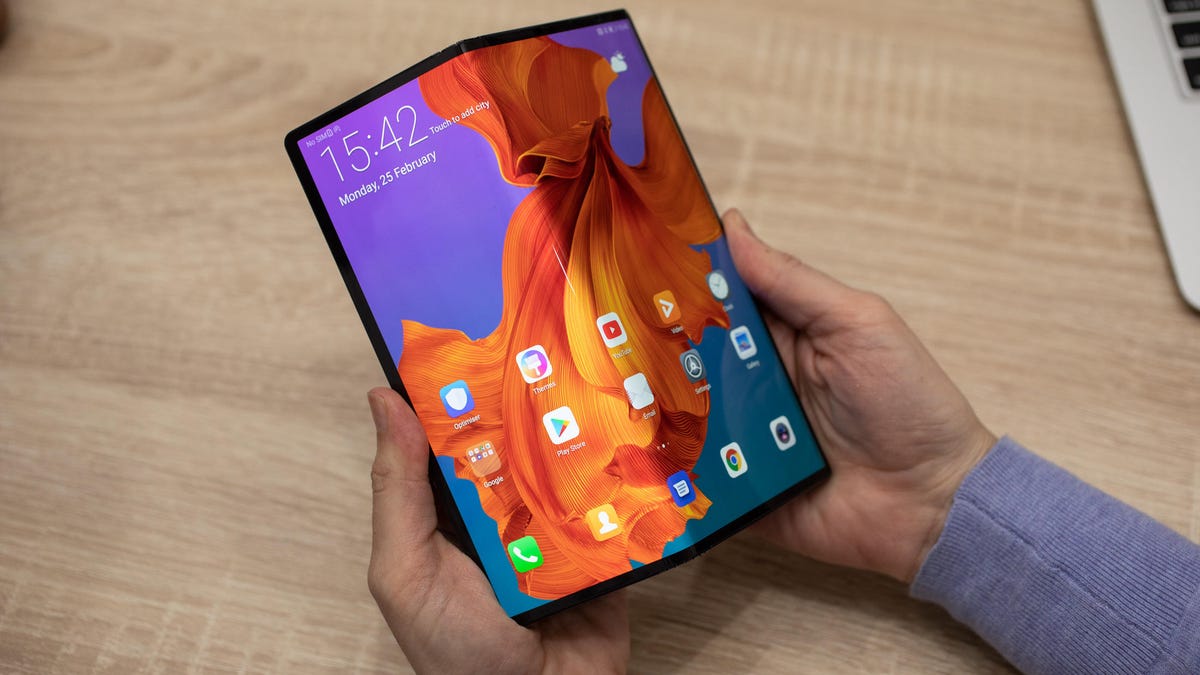Why OnePlus won't be leaping into the foldable phone craze
Hint: It has a lot to do with the number of digits in the Samsung Galaxy Fold and Huawei Mate X price tags.

Huawei and Samsung may be pushing into foldables, but not all handset makers are joining them.
Foldables might be the future of smartphones , but not all companies are jumping on the bandwagon.
Chinese handset maker OnePlus won't be developing a foldable phone anytime soon, CEO Pete Lau said Monday in an interview with CNET at MWC in Barcelona. That's largely because of price.
The first foldables unveiled from Samsung and Huawei cost about double -- or in the case of Huawei, triple -- the price of many high-end smartphones available today. Samsung's Galaxy Fold will cost a whopping $1,980 (about £1,500 or AU$2,800) when it hits the market April 26. And Huawei's Mate X pricing -- €2,300 ($2,600) -- shocked many MWC attendees.
"With this technology, costs are high," Lau said via an interpreter. "But the value to the end user doesn't seem to correlate."
He noted that OnePlus has been looking at what's possible for foldable phones. Lau views the devices as "very much a different product" and "very interesting," but "what we keep coming back to is the costs are definitely high."
For OnePlus, the price of a device is a big consideration. The Chinese company, which shares the same parent as Oppo , has made waves by delivering a premium phone experience for close to half the cost of many high-end devices. Its latest flagship phone, the OnePlus 6T, costs only $549 (about £499 or AU$774) for the 128GB model with 6GB of RAM, or $30 more for the 8GB model. That compares with $1,000 -- and up -- for the latest phones from Apple and Samsung.
At MWC this week, all the buzz is about 5G and foldables. Nearly every handset maker has said it's working on a phone that connects to the ultrafast mobile network. Only a few have said they're doing anything with foldables.
Samsung unveiled its first foldable phone, the Galaxy Fold, at its Unpacked event in San Francisco. That was followed by Huawei at MWC announcing its own foldable, the Mate X, and TCL, the Chinese parent company of Alcatel and BlackBerry , showing off possible foldable designs of its own.
A huge design leap
Foldables are seen as the next major leap in phone design and a way to get us interested in phones again. People are holding onto their phones for longer than before, and it's getting harder to justify a pricey upgrade given the relatively minor tweaks made every year. The hope is that foldables can change that and introduce a new way of interacting with electronics.
In the case of Samsung's Galaxy Fold, the device is a compact phone with a 4.6-inch display when closed and a more expansive, 7.3-inch tablet when fully opened. The Galaxy Fold has six cameras, with three on the back, one on the front and two inside. The Galaxy Fold comes with 12 gigabytes of RAM and batteries on each side of the foldable phone.
Unlike the Galaxy Fold, which features a larger display that folds inward like a book, Huawei's Mate X unfolds outward with a large continuous display. When folded, the front forms a 6.6-inch display, while the back is a 6.38-inch. Both sides swing out to form an 8-inch panel.
And TCL unveiled its new multi-gear DragonHinge for foldables and showed off several possible designs it could make one day. The hinge lets you do things like fold a display inward to close it like a book or curve it outward to wrap it around your wrist. TCL isn't planning to enter into the foldable phone market this year, executives told CNET in January. But the company wanted to show the industry what it could do.
"We see the opportunity to really shape and bring something fresh to market ... because there's so many different ways you can do [foldables]," said Stefan Streit, TCL's general manager of global marketing, in an interview in Spain ahead of the DragonHinge announcement.
For now at least, Samsung and Huawei may have the foldable phone market to themselves.

